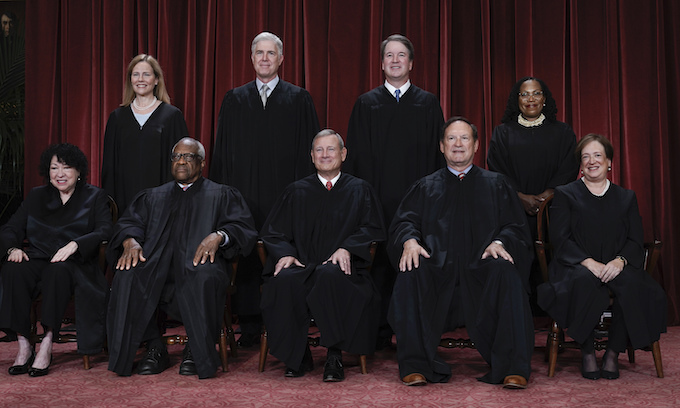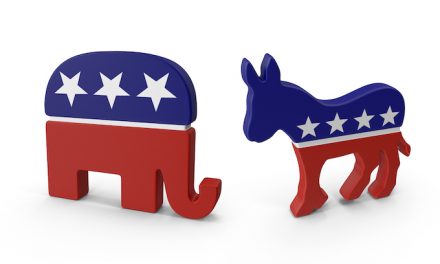The independence of the Judiciary — enshrined in the Constitution and essential to both the rule of law and democracy itself — has not been immune to attack. Acting through Congress, the federal government has on seven occasions changed the number of justices on the Supreme Court, chiefly for political gain. Such court-packing reflects badly on the American judicial system as a whole, since the perception of judicial independence or its absence permeates all levels of the courts.
To end the pernicious practice, a group of 15 former state attorneys general — eight Democrats and seven Republicans — got together in 2019 to found the Coalition to Preserve the Independence of the United States Supreme Court. They proposed a constitutional amendment to permanently ban court-packing — the one-sentence Keep Nine Amendment — which says: “The Supreme Court of the United States shall be composed of nine Justices.”
It now has the support of over 200 members of Congress, 19 state legislatures, attorneys general, governors, and other government officials. Voters support the amendment, 62% for versus 18% against. Many justices, including Stephen Breyer and the late Ruth Bader Ginsburg, agreed that nine is “a very good number,” large enough to represent some diversity of views, small enough to allow the Court to be sufficiently deliberative. Nine is also the number of justices the Court has had since 1869.
In September 2020, U.S. rep. Dusty Johnson (R-S.D.) introduced the amendment in the House of Representatives as House Joint Resolution 53; he reintroduced it in 2021 (H.J.Res. 11) and again in January 2023 (H.J.Res. 8). In October 2020, Senator Ted Cruz (R-Texas) introduced it in the Senate as Joint Resolution 76. Senator Marco Rubio (R-Fla.), too, proposed an amendment in 2021 that the Supreme Court bench shall constitute “not more than nine judges.”
According to Article V, there are two ways to amend the Constitution: by a two-thirds vote on a proposed congressional resolution or by a convention called by Congress in response to applications from two thirds of the state legislatures. According to Paul Summers, former attorney general of Tennessee and current chair of the Keep Nine coalition, this is an opportunity for American leaders to come together despite their deep differences to protect the independence of one of the key institutions that protects our republic.
The immediate threat to judicial independence is from some Democrat lawmakers, who have proposed expanding the Court to 13 justices to counter a perceived conservative majority. The left views some recent judgments, such as the overturning of Roe v. Wade with the Dobbs v. Jackson Women’s Health verdict in 2021, as unfavorable, and in packing the Court with liberals justices, the lawmakers see an easy way to push the progressive agenda.
This is reminiscent of the Franklin D. Roosevelt administration’s attempt in 1939, during the Depression, to add six justices to the extant nine to ensure favorable rulings on New Deal legislation. During the period, in rulings such as Schechter v. United States, with which FDR was unhappy, the Court struck down more legislation than any other time in history. Then, as now, it was a bipartisan group that opposed him; and the public saw his attempt as an undemocratic power grab. Congress never voted on FDR’s motion.
The Supreme Court was established by Article III, Section 1, of the Constitution, giving Congress considerable control (subject to constitutional limitations) to organize the Judiciary. Since the Constitution does not specify the number of justices for the Court, changing the number does not require an amendment. It has been decided from time to time by congressional legislation, signed by the president.
The Judiciary Act of 1789 set the number at six — a chief justice and five associate judges — and led to the Court’s first assembly in February 1790. The number of judges has been changed seven times since. President John Adams signed the Judiciary Act of 1801, reducing the number to five just before quitting office, but his successor, President Thomas Jefferson, immediately brought it back to six with the Act of 1802. In 1807, Congress increased the number to seven; in 1837, it was bumped up to nine; and it rose to 10 in 1863. The passage of the Judicial Circuits Act in 1866 shrank the number back to seven and prevented President Andrew Jackson from appointing anyone new to the Court. Three years later, Congress raised the number to nine, where it has stood since.
Court-packing — the strategic appointment of judges sympathetic to the ruling dispensation or prevalent ideology — erodes the constitutional separation of powers among the three branches of government. The Supreme Court must be independent, and be seen as independent, to inspire public confidence and be able to rein in abuse of power by the other branches. Since the Court is non-partisan, politicians should not be able to weaponize it. While the Executive and Legislature are political, the Judiciary must necessarily remain apolitical to check and balance the other branches effectively. Judges are neither policy-makers nor activists legislating from the bench. Their loyalty is to the Constitution and, ultimately, to We the People — not to the president or party in power.
The desire to control judicial outcomes — proceeding in recent years from the left’s desire to reset America to its ideology — has resulted in greater pressure on judges. Most concerning is the escalation of threats to judges, their families, and their homes. Last year, an armed man was arrested near the home of Justice Brett Kavanaugh; he confessed the intent to harm Kavanaugh and himself. Before the Court’s overturning of Roe v. Wade, about 150 protesters marched and chanted outside the home of Justice Samuel Alito.
The Keep Nine coalition faces strong opposition from progressive groups like Take Back the Court and Demand Justice. The former views the Supreme Court as a vehicle to help “solve” the challenges of “climate change, racial justice, access to affordable health care, and economic inequality.” The present bench, it believes, is partisan and guilty of “racist voter suppression, partisan gerrymandering, unlimited corporate political spending, union busting, and complicity in the right-wing assault on free and fair elections.”
It sees the reversal of Roe v. Wade as erasing “fundamental rights and inviting abortion bans,” though there has never been a fundamental right to abortion. It also takes issue with the Supreme Court ruling that a New York law banning handguns for self-defense is unconstitutional despite the fact that the Second and Fourteenth Amendments protect the right to bear arms.
Both groups favor the addition of four seats to the Supreme Court bench. Take Back the Court has sponsored the Judiciary Act of 2021, introduced by Senator Ed Markey (D-Mass.), Congressman Hank Johnson (D-Ga.), and Congressman Jerry Nadler (D-N.Y.). The act is backed by the Congressional Progressive Caucus, Black Voters Matter, Greenpeace, the SEIU, Voto Latino, and 63 Democrat members of Congress. Demand Justice, in addition to four more judges to “restore ideological balance,” wants to institute a “binding code of ethics” for the Court, which it alleges is “the least accountable part of our government.”
With such pressure groups at work, it is critical that the independence of the Judiciary be maintained. The Supreme Court, as the guardian of the Constitution, must not be subject to the political winds of the day. One of the warnings of the “Anti-Federalists,” which led to the Bill of Rights, was that expansive Court interpretations could undermine constitutional checks and enable the abuse of government power.
Of late, government and bureaucracies have pushed progressive ideologies by arrogating to themselves extra-constitutional powers under the pretext of dealing with emergencies. We therefore need, even more, to preserve an independent Judiciary. Court-packing must be sent packing.
© Copyright © 2023 American Thinker, All rights reserved.
—-
This content is published through a licensing agreement with Acquire Media using its NewsEdge technology.



















Solidly put.. The left’s Already ruined the judicial system, with taking over the Dept of JUST US, and FBI.. LETS NOT ALLOW THEM TO RUIN our judiciary by packing the courts.